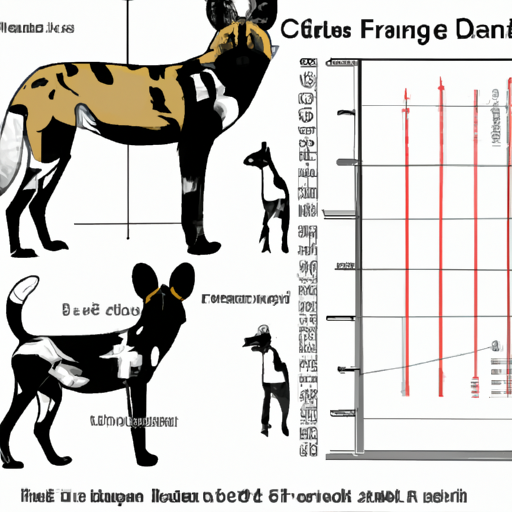If you’re a caregiver to animals, especially the wild ones, you might have wondered about the size of African Wild Dogs, also known as African Painted Dogs or Cape Hunting Dogs. These unique canines aren’t your regular domestic dogs but a different species altogether with certain fascinating characteristics that set them apart. Let’s explore these intriguing aspects in detail.
1. Physical Characteristics of African Wild Dogs
African Wild Dogs, scientifically known as Lycaon pictus, are one of the most distinctive species of dogs. They are characterized by their mottled coats of red, black, brown, white, and yellow fur, each dog wearing a unique pattern that could be likened to a human’s fingerprint. They have large, rounded ears and a bushy tail with a white tip that serves as a flag for others to follow while hunting.
Size and Weight
-
Height: Adult African Wild Dogs stand about 24 to 30 inches tall at the shoulder.
-
Length: They are approximately 29 to 43 inches long, not including the tail, which can add an additional 12 to 18 inches to their length.
-
Weight: In terms of weight, males are typically heavier, falling in the range of 40 to 75 pounds, while females weigh between 37 and 60 pounds.
2. Comparison with Other Canines
To give you a better understanding of their size, let’s compare African Wild Dogs with some other familiar canines:
| Canine Species | Average Weight (lbs) | Average Height (Inches) |
|---|---|---|
| African Wild Dog | 40 – 75 | 24 – 30 |
| Domestic Dog (Labrador) | 55 – 80 | 21 – 24 |
| Gray Wolf | 60 – 120 | 26 – 32 |
As seen from the table above, African Wild Dogs fall in the mid-range when compared to domestic dogs and wolves, being taller than most domestic breeds but smaller than gray wolves.
3. Adaptations Related to Size
Their size plays a crucial role in their survival. Being medium-sized animals, they have a unique set of adaptations:
- Speed: Their lean bodies and long legs allow them to reach speeds of up to 44 miles per hour, vital for chasing down swift prey.
- Endurance: They are built for endurance rather than brute strength. Their large hearts and lungs enable them to sustain long chases.
- Social Structure: Their size also influences their social behavior. They live and hunt in packs, which allow them to take down larger prey and defend against larger predators.
4. Size at Different Stages of Life
African Wild Dogs reach their full size at about a year old. Here’s a rough guide to their growth:
- Birth: Pups are born small and helpless, weighing less than a pound.
- 1 month: At one month, they’ll weigh around 5 pounds and start to venture out of the den.
- 3 months: By three months, they can weigh up to 20 pounds.
- 6 months: At six months, they are nearly full-grown and can weigh up to 40 pounds.
- 1 year: By their first birthday, they will have reached their full adult size.
5. Threats to African Wild Dogs
Sadly, African Wild Dogs are endangered, with only about 6,600 left in the wild. Their size, while advantageous, also makes them vulnerable to larger predators like lions and hyenas. Habitat loss, disease, and human-wildlife conflict are also significant threats.
FAQ Section
Q1: Are African Wild Dogs related to domestic dogs?
No, African Wild Dogs are not directly related to domestic dogs. They are a separate species and cannot interbreed with domestic dogs.
Q2: How long do African Wild Dogs live?
In the wild, African Wild Dogs live up to 11 years. In captivity, they can live up to 15 years due to better access to food and medical care.
Q3: What do African Wild Dogs eat?
They are carnivores and mainly feed on antelopes. However, they also eat rodents, birds, and even large mammals like wildebeests, especially when hunting in packs.
Q4: How fast can African Wild Dogs run?
African Wild Dogs can reach speeds up to 44 miles per hour, making them exceptional hunters.
Q5: Why are African Wild Dogs endangered?
Habitat loss, disease, and human-wildlife conflict are the main threats to African Wild Dogs. Additionally, their size makes them vulnerable to predation from larger carnivores like lions and hyenas.
We hope this guide has given you a comprehensive understanding of the size and life of African Wild Dogs. As caregivers, your role in their conservation is invaluable. Every effort to understand and protect these unique creatures helps ensure their survival for future generations.



